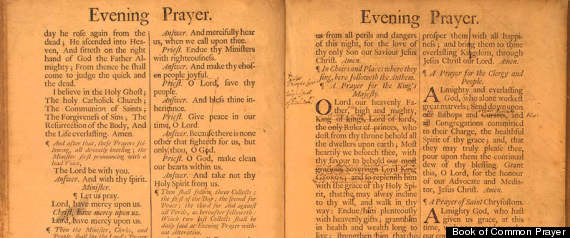Religion
Related: About this forumReligion in America on July 4, 1776
http://www.huffingtonpost.com/maria-mayo/religion-in-america-on-july-4-1776_b_3542203.htmlMaria MayoM.Div., Ph.D.
Posted: 07/04/2013 7:26 am
 ?6
?6
When the Declaration of Independence was drafted on July 4, 1776, religious practice in the 13 colonies of the United States was colorful and varied. The quest for independence -- as well as loyalist resistance to the cause -- permeated church life and teachings across denominational lines. Patriots argued that their fight was God-ordained, while many Anglican clergy were bound by oath to pray for the King and the royal family.
Benjamin Franklin depicts God's role in the revolution in his design for the Great Seal of the United States. Circling an image of Moses parting the Red Sea and leading the Israelites out of Egypt is the inscription, "Rebellion to Tyrants is Obedience to God." Cast in 1752 in Philadelphia, the Liberty Bell bears the words of Lev. 25:10, "Proclaim liberty throughout the land unto all inhabitants thereof." And the opening lines of the Declaration of Independence cite God as the author of the quest for freedom: "We hold these truths to be self-evident, that all men are created equal, that they are endowed by their Creator with certain unalienable Rights, that among these are Life, Liberty and the pursuit of Happiness."
Around the time of the Revolutionary War, most American Christians belonged to Anglican, Congregationalist, or Presbyterian groups. In 1776, there were also around 2,000 Jews (mostly Sephardic) and five synagogues in the colonies. The average size of a church congregation was around seventy-five members, and religious adherence amounted to only 17 percent of the total population.
The effect of the struggle for independence on religious practice was most visible in Anglican parishes. Since Anglican priests pledged loyalty to the King as a part of their ordination vows, many remained faithful to the British and continued with liturgical prayers for the monarchy. Boston's King's Chapel was a thriving Anglican congregation during this time, with "box pews," or small enclosures owned and even decorated by wealthy families, on the main floor, and "unboxed pews" for black or poor church members on the second floor. King's Chapel was the first church in New England to incorporate music into its services, having both a choir and an organ. Popular at the time was the hymn, "Old 100th," commonly sung today as a doxology ("Praise God from whom all blessings flow"
more at link
dimbear
(6,271 posts)a questionable number but one which would stun most modern Christians. Americans of the day were poor, rural, and mostly concerned with making a living. Mostly fishing or planting. The upper classes were the ones who left behind sermons and a very distorted idea of the origins of our country.
cbayer
(146,218 posts)Of course, this only reflects practices in the 13 colonies. Religious adherence was probably much higher in areas colonized by the Spanish.
dimbear
(6,271 posts)In the Spanish areas the religionists had advantages . When religion isn't a free choice, you can up your numbers with ease.
cbayer
(146,218 posts)dimbear
(6,271 posts)They had license to destroy or enslave those who didn't accept Christianity. (The Papal bulls make some interesting reading.) That sort of thing tends to up your recruitment. You can visit missions in California and New Mexico where some pretty horrid examples of this played out, although the very worst of the system took place in Central America under the Jesuits. I don't mean to downplay the outrages in Brazil.
Latinos and African-Americans sometimes have an advantage in religious clarity over Europeans, because in a few cases they can actually trace their family trees back to the point in time where they were forced to accept Christianity. For Europeans this transition is usually lost in the mists of the past.
It would be interesting if someone in the know would tell us whether the recent trend of Latinos away from Catholicism and toward Pentecostal type churches is at least partly a tardy decision to finally exert some free choice.
cbayer
(146,218 posts)I learned some very interesting history while living in Santa Fe.
Having grown up on the east coast, I was entirely unaware that a whole other part of the country was being settled by the Spanish. I am still learning about it.
The episode in which the indigenous peoples drove the Spanish out of New Mexico is particularly interesting to me. Apparently the Spanish came back with a much less aggressive attitude and some peace was reached.
okasha
(11,573 posts)in my area were conversos who had emigrated to Mexico and then into South Texas to avoid scrutiny by the Inquisition. You can see identical sybolism in their architecture and in Jewish artifacts many centuries older.
As for the indigenous peoples, efforts to convert the Commanche and Lipan Apaches had a pretty high mortality rate.
cbayer
(146,218 posts)When I lived in Santa Fe, "gringos" were third in population, which was a new experience for me.
I just visited again and there are still significant tensions, particularly outside the cities. We talked to some artists on the high road who had had their lives threatened.
The disparities in wealth and status are still glaring in Santa Fe. Much as I love it, it continues to have significant problems.